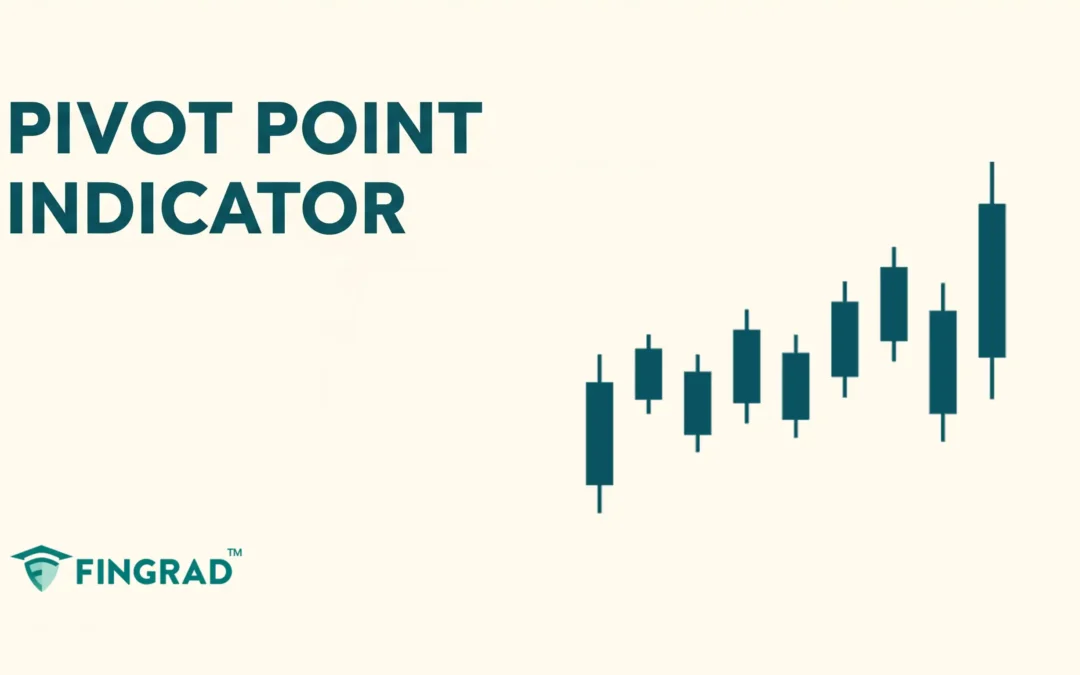In the Stock Market, charts display price action, which helps you understand the market and make better entry and exit points. Technical analysis helps you understand the market structure according to the price action and provides a cutting-edge advantage in the market regarding the trend to trade or invest.
In this article, we will understand what the pivot points indicator is, how to calculate it, different types of pivot points, how to trade it, its limitations, and why to use pivot points while trading.
What is Pivot Points?
Let’s first understand the resistance and support level, followed by the pivot points:
- Resistance levels: This is the price level above the current market price, where sellers are strong against the uptrend, creating volatility, and it acts as a “ceiling” for further rise.
- Support Levels: This is the price level below the current market price, where buyers are strong against the downtrend, creating volatility, and it acts as a “floor” for further falls.
The Pivot Point Indicator is used to calculate the potential support and resistance levels by a formulated method. It is calculated by the previous day’s trading price points, like the high, low, and closing of the candlestick, which helps in identifying the levels and making better entry and exit points.
From the pivot points calculated, multiple support and resistance pivots are derived, which are going to act as the potential reversal point or a zone where the positions are strong on either side, which would result in a trending market.
As pivot points are mainly used for intraday trading and short-term investment, due to the dependency on the previous day, there are quick reversals possible from the strong support or resistance levels.
How to Calculate Pivot Points?
Formula
Pivot Point(PP) = (High + Low + Close) / 3
- Resistance(R1) = (2 x PP) – Low
- Support(S1) = (2 x PP) – High
- Resistance(R2) = PP + (High – Low)
- Support(S2) = PP – (High – Low)
Similarly, more resistance and support levels can be calculated as per the requirement for higher values or targets. Here, the high, low, and closing prices are derived from the previous candlestick.
How to trade the Pivot Points?
Buy signal
As the price breaks above the pivot point line plotted by the indicator, it indicates that traders to enter a long position in the security.
Entry
- After the closing of the candlestick above the pivot point in a bullish direction, enter a long position.
Stop-loss
- An ideal stop-loss is at the support(S1) plotted below the Pivot Point line by the indicator.
Target
- Your primary target for the long trade is the next resistance.
- When you are trading for the short term, a risk-reward ratio of 1:1 or 1:2 is the primary target due to volatility after the confirmation of the pattern.
Example: In the below image, you can look at the chart of “HCL Technologies Ltd” stock at a 1-hour timeframe on 8th October 2024, you can see the buy signal generated using the pivot points indicator as it crosses the pivot point line upwards.
Sell Signal
As the price breaks below the pivot point line plotted by the indicator, it is a sell signal.
Entry
- After the closing of the candlestick below the pivot point in a bearish direction, enter the trade.
Stop-loss
- An ideal stop-loss is at the resistance(R1) plotted above the Pivot Point line by the indicator.
Target
- For the short trade, the target is the next support level.
- When you are trading for the short term, a risk-reward ratio of 1:1 or 1:2 is the primary target due to volatility after the confirmation of the pattern.
Example: In the image below, you can look at the chart of “L&T Ltd” stock at a 1-hour timeframe on 16th December 2024. You can see the sell signal generated using the Pivot points indicator as it crosses the pivot point line downwards.
What are the limitations of Pivot Point?
- Once the pivot points are calculated for the selected period, the points are static and remain the same for the entire period.
- It is inefficient in high-volume or volatile market conditions due to its lagging nature.
- Pivot points are a lagging indicator as they are calculated on past price data.
Why Use Pivot Point as an Indicator?
- Key Context: Because it is mathematically calculated support and resistance levels without human intervention, the results are highly reliable.
- Versatility: As support and resistance imply in all the trading markets, the pivot points are used, and the strategies apply throughout all the markets to their respective opening and closing.
In Closing
In this article, we discussed what Pivot Point chart patterns are, and we saw some common chart types and how they are formed, and how to trade their limitations, along with strategies to approach the trade.
The pivot point is a powerful tool to identify the potential levels of support and resistance. By understanding these concepts, you will be able to identify the price action and changes in trend reversals to enter a long or short position with a good risk-to-reward ratio and spot better entry and exit levels.
In any financial market throughout the world, no tools or indicators are 100% accurate. It all depends on your risk management, backtesting of the strategies, and a degree of luck. For new traders/investors, it is important to wait for the confirmation and control your emotions when the trade is open.


